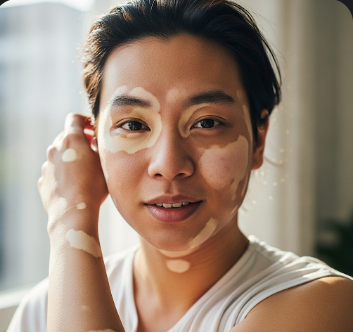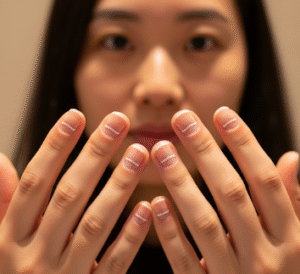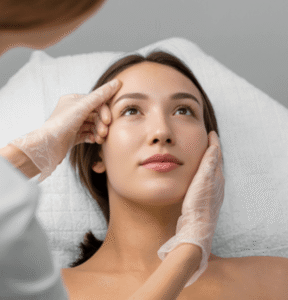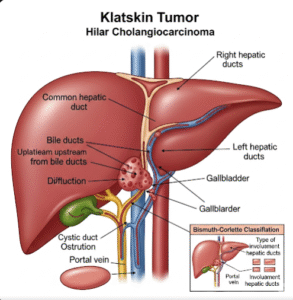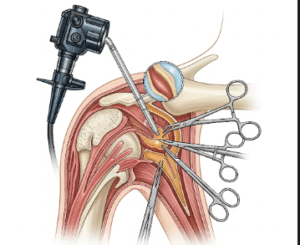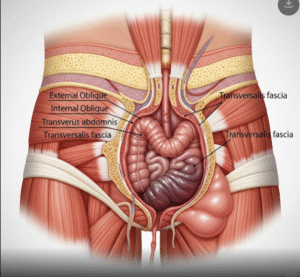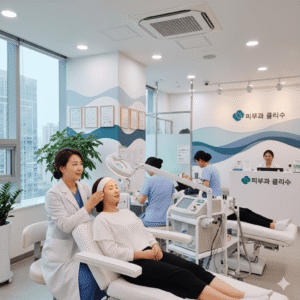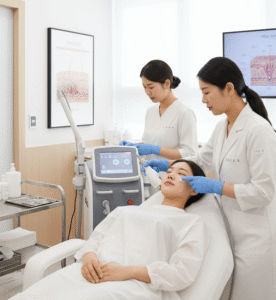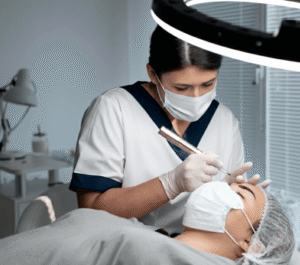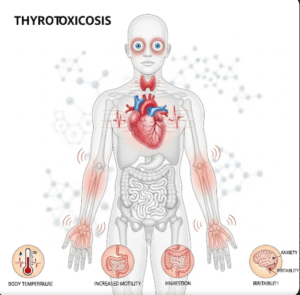Overview
Hypopigmentation refers to patches of skin that are lighter than the surrounding skin due to a reduction in melanin, the pigment responsible for skin color. It can occur on any part of the body and may be localized or widespread, depending on the underlying cause.
Hypopigmentation can arise from genetic conditions, skin injuries, infections, or inflammatory disorders. In South Korea, dermatology clinics and specialized skin centers offer diagnostic testing, treatment, and management strategies for hypopigmentation, helping patients restore skin tone and address underlying conditions.
Key Facts
🟢 ➤ Hypopigmentation is a reduction of melanin, causing lighter skin patches.
🟢 ➤ Can be congenital (present from birth) or acquired later in life.
🟢 ➤ Symptoms often include pale or white patches, sometimes with fine scaling or dryness.
🟢 ➤ Common causes: vitiligo, post-inflammatory changes, fungal infections, or trauma.
🟢 ➤ Early diagnosis helps identify underlying causes and enables effective treatment.
🟢 ➤ South Korean dermatology clinics provide comprehensive care, including topical therapies, laser treatment, and phototherapy.
What is Hypopigmentation?
Hypopigmentation occurs when melanocytes (cells that produce melanin) are damaged, destroyed, or less active, resulting in lighter skin compared to surrounding areas.
Key points:
➤ It can be temporary or permanent, depending on the cause.
➤ May involve small patches (localized) or large areas (generalized).
➤ Sometimes associated with inflammatory skin conditions or autoimmune disorders such as vitiligo.
➤ Hypopigmentation is distinct from albinism, where there is complete lack of melanin across the skin, hair, and eyes.
Symptoms Related to Hypopigmentation
Symptoms depend on cause and extent:
🟢 ➤ Light or white patches on the skin, sometimes symmetrical.
🟢 ➤ Mild dryness or scaling in affected areas.
🟢 ➤ Gradual enlargement of patches in some cases.
🟢 ➤ Hair in affected areas may also turn white or gray.
🟢 ➤ Usually painless but may affect appearance and self-esteem.
🟢 ➤ Rarely, other systemic symptoms appear if hypopigmentation is associated with broader syndromes.
Causes / Possible Causes
Hypopigmentation can result from various dermatological, genetic, or systemic factors:
Autoimmune Causes
➤ Vitiligo – destruction of melanocytes leading to progressive white patches.
➤ Alopecia areata may sometimes cause depigmented hair patches.
Post-Inflammatory Hypopigmentation
➤ Skin injury, burns, eczema, psoriasis, or infections can reduce melanin after healing.
Infectious Causes
➤ Fungal infections like tinea versicolor may produce lighter or patchy skin areas.
Genetic or Congenital Causes
➤ Conditions such as piebaldism or certain forms of albinism.
Chemical or Drug-Induced Causes
➤ Exposure to phenolic compounds or certain medications may impair melanocyte function.
Other Causes
➤ Aging, hormonal changes, or vascular disorders can occasionally lead to mild hypopigmentation.
When Should I See a Doctor?
Consult a dermatologist if:
🟢 ➤ Light patches appear suddenly or spread quickly.
🟢 ➤ There is associated redness, scaling, or irritation.
🟢 ➤ Hypopigmentation affects visible areas causing cosmetic concerns.
🟢 ➤ You have a family history of autoimmune or genetic skin disorders.
Early evaluation ensures accurate diagnosis, exclusion of serious conditions, and timely intervention to restore pigmentation or prevent progression.
Care and Treatment
Management depends on the underlying cause, severity, and extent of hypopigmentation:
Topical Treatments
➤ Corticosteroid creams for inflammatory or autoimmune causes.
➤ Calcineurin inhibitors (e.g., tacrolimus) for vitiligo or sensitive areas.
➤ Antifungal creams for infection-related hypopigmentation.
Light and Laser Therapies
➤ Phototherapy (narrowband UVB) stimulates melanocyte activity.
➤ Excimer laser targets localized patches for pigmentation restoration.
Cosmetic Approaches
➤ Camouflage makeup or self-tanning products to even out skin tone.
➤ Micropigmentation (medical tattooing) for small, persistent areas.
Lifestyle Measures
➤ Sun protection to prevent burning and further pigment loss.
➤ Moisturizers to maintain skin health and prevent dryness.
➤ Psychological support if appearance affects self-esteem or mental health.
Advanced Care in Korea
➤ South Korean dermatology clinics provide personalized treatment plans, combining topical therapy, phototherapy, and laser interventions.
➤ Multidisciplinary care may involve dermatologists, psychologists, and cosmetic specialists for holistic management.
Highlights (Clean Green Arrow Version)
🟢 ➤ Hypopigmentation is the loss or reduction of melanin, causing lighter skin patches.
🟢 ➤ Causes include vitiligo, post-inflammatory changes, fungal infections, genetic disorders, or chemical exposure.
🟢 ➤ Symptoms: white or pale skin patches, sometimes with dry or scaly skin.
🟢 ➤ Early evaluation allows accurate diagnosis, treatment, and prevention of further pigment loss.
🟢 ➤ Treatment: topical therapies, phototherapy, laser therapy, cosmetic solutions, and lifestyle measures.
🟢 ➤ South Korea offers advanced dermatology care with integrated treatment and cosmetic support for hypopigmentation.

